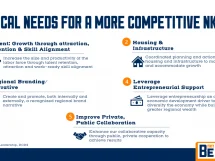By Jacqueline Pitts, The Bottom Line
FRANKFORT, Ky. — Economists Friday presented declines in Kentucky’s overall budget and Road Fund and discussed what is expected for the economy in the rest of the 2020 and 2021.
The COVID-19 pandemic has presented an unprecedented global contraction in the economy. Deputy Executive Director for Policy and Research in the Office of the State Budget Director Michael Jones pointed to a collapse of consumer and business demand, supply chain disruptions, and energy sector weakness, as well as a historic decline in oil prices as huge drivers in the current economic calamity.
Economic outlooks are presented in the context of an optimistic prediction, control scenario, and a pessimistic outlook in meetings of the Consensus Forecasting Group.
In a meeting Friday, the group was presented with only control and pessimistic outlooks as declines continue due to the coronavirus pandemic.
In the last two months, Kentucky has seen declines under both of those scenarios for both the overall state budget and the Road Fund. Chief State Economist Greg Harkenrider noted if revenues fall by more than 5%, legislative action is required to address the shortfalls.
All forecasts for the overall budget showed declines, but the numbers were under the 5% threshold. However, the Road Fund is down 7.1% under the May control forecast and 10.4% in the pessimistic forecast.
The group decided to go with the pessimistic model for the Road Fund. Because of this, legislators will need to be called back into a special session to deal with these declines soon as there are only 45 days left in the fiscal year.
For the remaining two months of the 2020 fiscal year General Fund budget, the group decided to go with the pessimistic scenario. This means the state is now assuming additional declines of 4% compared to the budget legislators enacted, which was already cut back significantly during the 2020 session by legislators.
As for what the economy looks like moving forward, presentations were made on the state and national outlook for the remainder of the 2020 fiscal year (which ends in July), as well as forecasts for 2021. Both the control and pessimistic scenarios presented assumed the pandemic will peak and the bottom of the growth fall will end in the coming months.
The national outlook control scenario (45% probability) and the pessimistic scenario (35% probability) both showed a three-quarter recession that has already started. However, the recession is much deeper and sharper under the pessimistic scenario.
Below is what some of those numbers look like at the national level under both models:
• Consumer demand is expected to fall by 32% under control compared to 60% under the pessimistic scenario.
• Overall GDP declines of 8.3% in control compared to 22.9% in pessimistic.
• Manufacturing employment declines of 8.9% under control scenario vs. 21.6% under the pessimistic numbers.
Another meeting of the Consensus Forecasting Group could be called in the coming months to discuss further declines and revisions for the 2021 budget.





















Add Comment